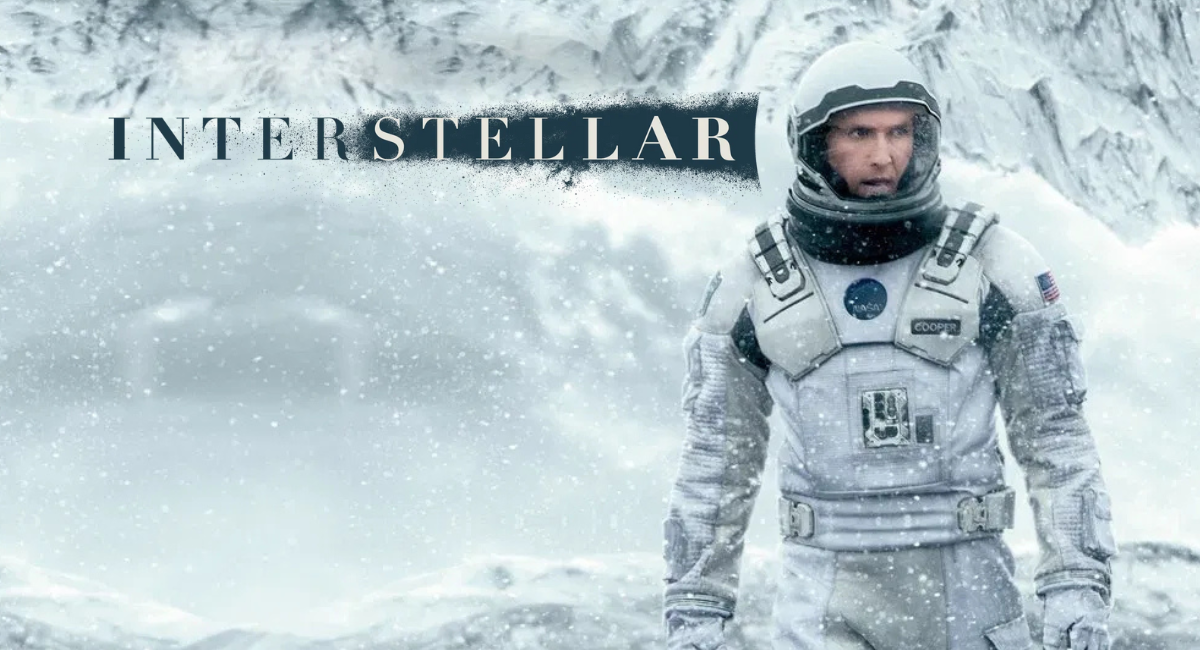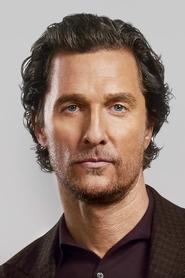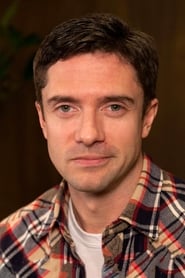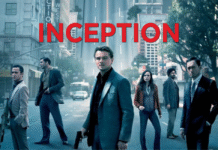Interstellar (2014): Love, Black Holes and a Lot of Very Confused Science
Let’s be honest: Interstellar is the kind of film that makes you feel like you failed your physics GCSE just by watching it. Christopher Nolan, clearly upset that Inception wasn’t confusing enough, decided to add astrophysics, quantum mechanics and—why not—the power of love as a measurable force.
Released in 2014, this sci-fi epic stars Matthew McConaughey doing his best impression of a sentient Southern drawl, Anne Hathaway trying to make equations sound sexy and Jessica Chastain smouldering with rage over childhood abandonment. Meanwhile, Michael Caine quotes Dylan Thomas like he’s auditioning for a funeral brochure.
Table of Contents
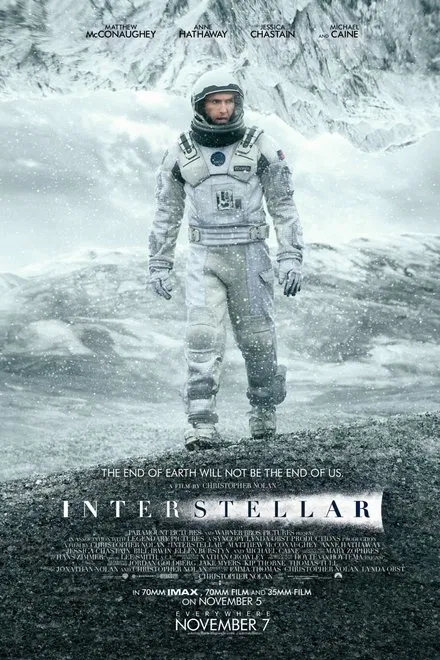
Plot: Earth Is Dusty, So Let’s Go Poke a Wormhole
Earth is dying—again. This time, it’s not nukes or AI or zombies. No, it’s crop blight and dust storms—which somehow feel more terrifying because they’re real and currently happening.
McConaughey plays Cooper, a former NASA pilot turned reluctant farmer. He’s recruited for a last-ditch space mission to find a new habitable planet through a conveniently placed wormhole near Saturn, as you do. His daughter Murph, naturally, has abandonment issues about this. To be fair, he does bugger off into a black hole without telling her when he’ll be back.
The team travels to various planets, each more ridiculous than the last: one is all water and one giant wave, the next is a snowy hellscape where Matt Damon shows up and tries to murder everyone because isolation has turned him into a homicidal toddler.
Meanwhile, time dilation means Cooper returns decades later, hasn’t aged much, but his daughter is now older than he is. And don’t worry, Interstellar assures us that love transcends time and space—a concept previously only explored by greeting card companies and stoned university students.
Characters: Ghosts, Geniuses and a NASA Run by Poets
Cooper (Matthew McConaughey)
A pilot, an engineer, a father and a professional space whisperer. Cooper has all the charisma of McConaughey’s Lincoln ads and about the same clarity. He’s basically trying to save humanity while solving the emotional equivalent of a crossword puzzle.
Dr. Brand (Anne Hathaway)
A scientist with feelings, which in a Nolan film is basically a unicorn. She delivers the infamous “love is a quantifiable force” speech, which either made you cry or choke on your popcorn with laughter.
Murph (Jessica Chastain / Mackenzie Foy)
A brilliant physicist and the film’s emotional core. Abandoned as a child, she spends most of her adult life being really angry—until she solves gravity with the help of her dad… from inside a black hole.
Dr. Mann (Matt Damon)
The surprise villain! He’s a genius astronaut who faked data so he wouldn’t be left behind on an ice planet. Turns out being alone for years turns you into a lunatic who wants to kill Matthew McConaughey. Relatable.
Themes: Time, Love and Quantum Bullsh*t
This film is Nolan doing Nolan things—time-bending, reality-questioning, emotionally stunted protagonists and music so loud it could wake the dead. But at its core, Interstellar is about humanity’s survival instinct, the inescapable nature of time and the baffling idea that love is a literal fifth-dimensional force.
It juggles relativity and quantum theory with all the grace of a one-legged juggler on a trampoline. But somehow, despite the confusion, it sticks the landing emotionally—even if scientifically it occasionally faceplants into a wormhole of nonsense.
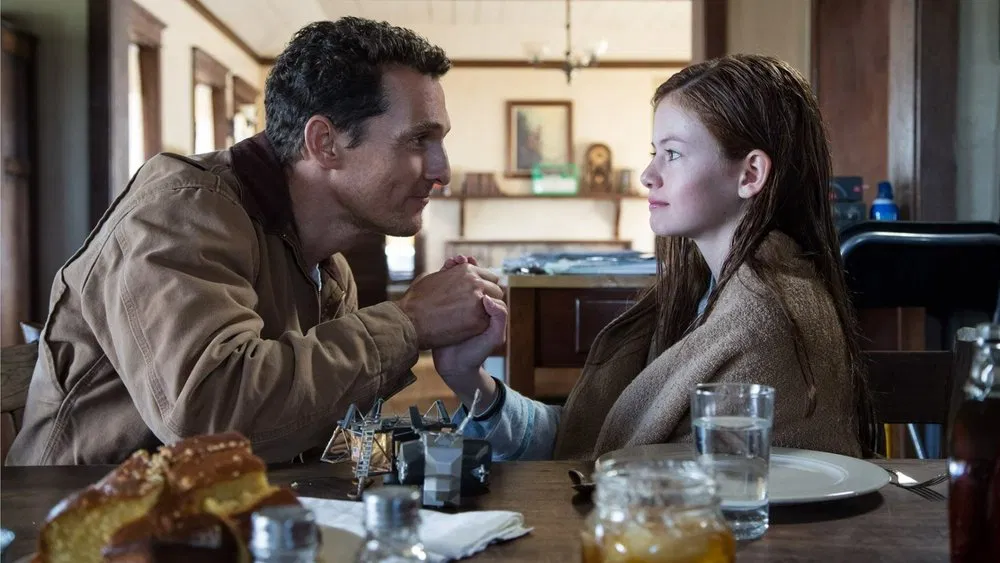
Why It Works: Nolan’s Bombastic Balancing Act
Sure, Interstellar is bloated, earnest and occasionally disappears up its own gravity well, but it’s also visually staggering, emotionally ambitious and deeply human.
Nolan manages to make a three-hour film about space, loss and metaphysics just accessible enough to keep you watching, even if you don’t understand a damn thing beyond “black hole = bad.”
And Hans Zimmer’s score? A relentless, booming church organ from the edge of time. It’s like being chased by God through a cathedral. Beautiful, terrifying and louder than reason.
Scientific Accuracy: Somewhere Between NASA and Narnia
Astrophysicist Kip Thorne consulted on the film, meaning a lot of the science is technically plausible. And then there’s the other bit—the “fifth dimension bookshelf” where McConaughey sends Morse code messages to his daughter via gravitational tickling. That’s when we leave science and firmly enter the realm of “Nolan, are you alright?”
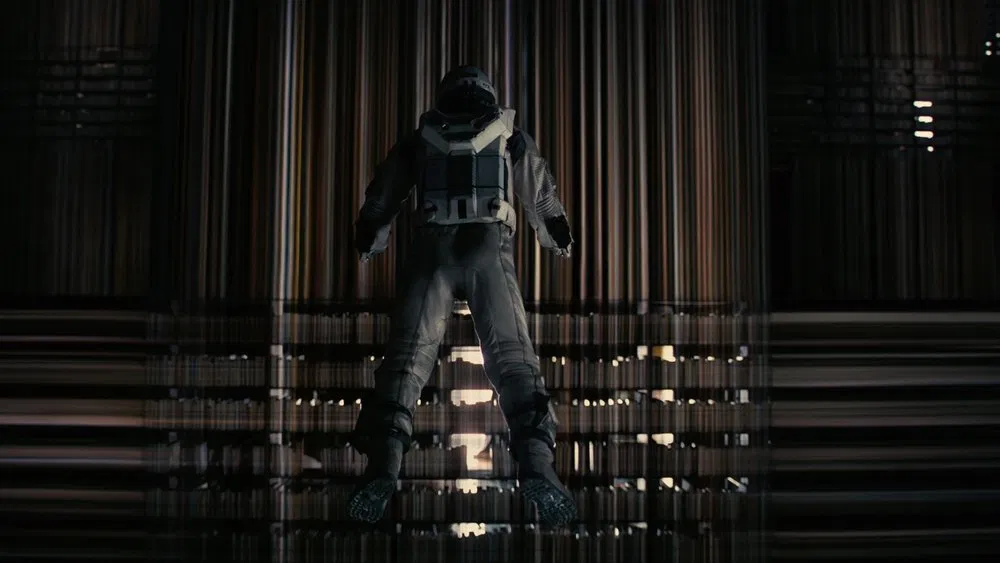
Awards and Accolades: Because Confusion = Prestige
- Won: Best Visual Effects (rightfully so, it’s gorgeous)
- Nominated: Best Score, Best Production Design, Best Sound, Best Sound Editing and Best Original Score
And let’s not forget the meme legacy. McConaughey crying in front of a monitor? That’s your soul every time you open a utility bill.
Trivia That Sounds Made Up But Isn’t
- The black hole Gargantua was so scientifically accurate it produced new academic papers.
- The Tesseract scene reportedly caused existential breakdowns in multiple viewers. Possibly.
- NASA actually showed the film to new recruits. Presumably as a warning.
My Final Thoughts: Beautiful Nonsense, But We Love It Anyway
Interstellar is either a philosophical masterpiece or a TED Talk on steroids wrapped in a space opera. Either way, it leaves a mark. It’s full of ambition, sincerity and just enough science to sound smart while still making your brain melt.
It’s about love, time and gravity. And mostly about feeling really small in a very big universe, unless you’re Matthew McConaughey, in which case you get to whisper your way into a fifth-dimensional IKEA and come out emotionally intact.
Visually breathtaking, emotionally resonant, scientifically… adventurous. Just don’t bring a calculator or expectations of clarity.

If You Like Interstellar, I Recommend These Movies:
- Tenet Explained: Badly and With Swearing
- Gravity: Sandra Bullock Screams in Space for 90 Minutes
- 2001: A Space Odyssey and the Existential Terror of Beige Rooms
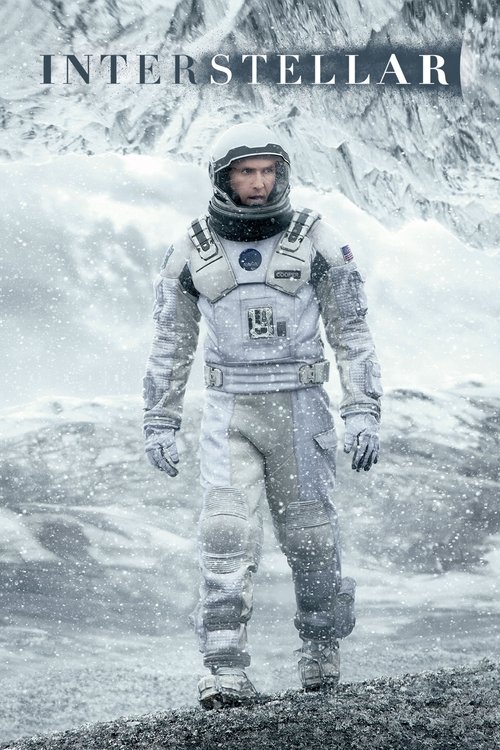
Interstellar
Cooper
Brand
Professor Brand
Murph
Tom
Doyle
Getty
Murph (10 Yrs.)



